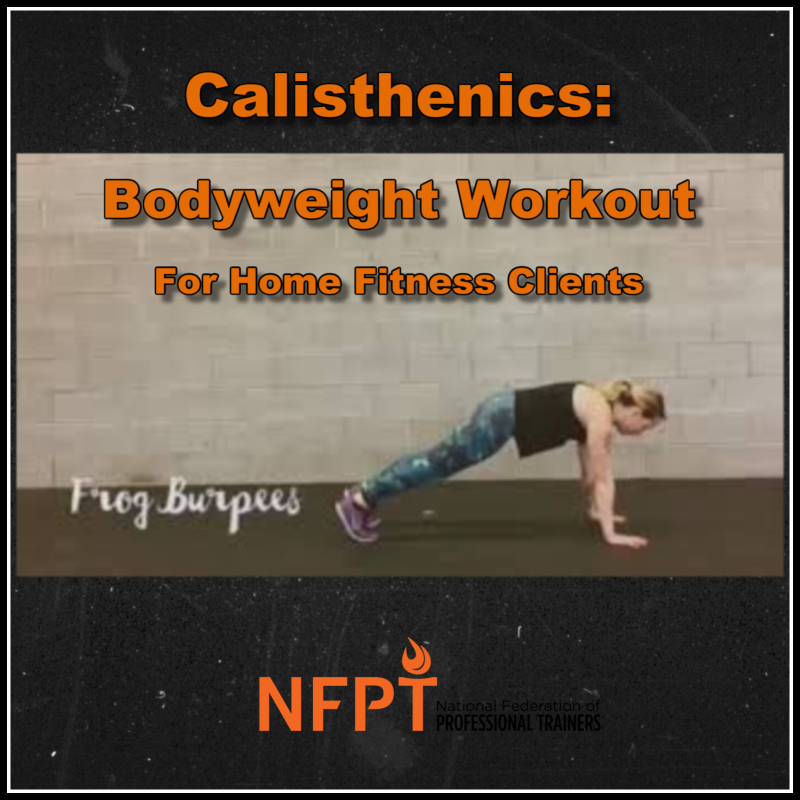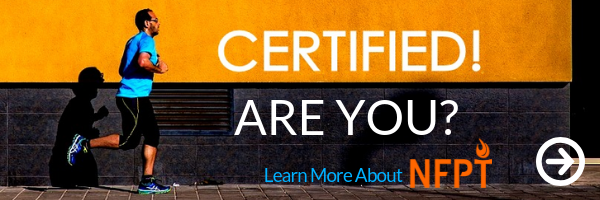
Change and uncertainty can be extremely unsettling. When life falls out of its natural rhythm and we don’t know when it will return, it’s hard on our health. Both physically and emotionally. Many of us turn to movement and exercise to alleviate stress but what can we do when the gym is closed? Calisthenic training consisting of bodyweight exercises with little to no equipment may be the only option for many of our clients.
Times They Are a’Changing
Right now we are collectively experiencing a major shift in our daily routines. Even though it requiring us to “just” stay home, I believe that is proving to be more challenging than we might have first thought. It is asking us to reevaluate what our daily routine looks like, and how to complete our regular activities within our homes.
For some this might not be terribly hard. Having a home gym or dance studio, or a room entirely dedicated to office space is all the adjustment required. But many more are struggling to continue on with work and their fitness routine.
It can be hard to find the will or motivation when life feels like it’s on pause. For many, it can seem impossible to get an effective workout at home without any equipment. I may not have all the answers for how to best cope with these strange times. But I do know that for myself and many of my clients maintaining a regular workout routine gives structure during uncertain times.
Also, continuing to workout regularly boosts the immune system and improves overall mood. Both of which are especially important right now. Yet, the question persists: “What if you don’t have any equipment?”!
Yes,we can do virtual training sessions, and how wonderful it is to live in this age of technology. Yet, what if the client doesn’t have any equipment at home. Most trainers can work around this and provide an incredibly effective workout using only bodyweight. However, some clients might not be so sure.
Here are some key points to underscore the worthiness of calisthenics and help to keep our clients fit.
- Intensity Variation: All bodyweight movements can be modified to be more or less challenging. Meaning a bodyweight workout can be perfectly tailored to the clients current fitness levels. You can use a push-up as a simple example and create a program with variations. It can be programmed for a beginner to advanced athlete. Try a tabletop push-up to plyometric push-up or decline push-up.
- Tempo Training: Slowing things down or speeding things up to an unfamiliar pace and tempo will stimulate muscle fibers differently than the approach your clients are used to employing. Either way, be sure they are able to maintain control over the movement above all else.
- Balance and Mobility: One of my favorite aspects of this type of training is the strong focus it can place on balance and mobility. When we move away from equipment and benches, the client is required to be in full control of his/her body and its movements. Often bodyweight training employs single leg or arm exercises, or yoga and Pilates-like moves. In addition, one should be working through a greater range of motion and challenge joint mobility, since external resistance is absent and the challenge can be increased.
- Confidence: Bodyweight training improves coordination and proprioception, which in turn tends to result feeling much more confident in one’s body and abilities.
- Effective: This may be the greatest point of contention regarding calisthenic training, and you can argue it with a client until the cows come home. However, it might be better to simply ask them to give it a chance for a lack of a better option. Tell them you believe in this method but also understand their skepticism. After the first 30 minute workout and I’m betting by the end of it they will be a convert.
I’ve compiled a video demonstrating eight dynamic bodyweight exercises. These can be mixed and matched as you please, and offer a wide variety of options.
My go-to has been to pair exercises, as in supersets, performed for time. This would consist of four sets of two exercises for three rounds. I suggest 30-50 seconds for each exercise with a short rest of 10-30 seconds, depending on the client’s ability and fitness level. Then a rest of 1-2 minutes between the sets.
For example, a client with lower stamina might start with this:
Frog Burpees 30s
Squats, Knee to Elbow 30s
Rest 30
Repeat 2x
Rest 2 minutes
Repeat with next superset, etc.
A more advanced client might go faster and perform longer sets with shorter rests.
But there are many ways to use these movements! Get creative with how they are presented and your clients will have a great time in their workouts. While many of us and our clients are feeling overwhelmed at this time, work with those who are willing to use exercise as a productive outlet and familiar touchstone. Stay healthy, keep rested and be gentle on yourself. We are all doing the best we can.







